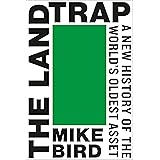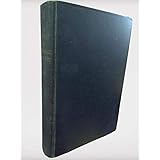Embarking on the journey of precious metals investment can be an exciting, yet often overwhelming, prospect for many. The allure of gold, a timeless store of value, frequently brings to mind the image of a gleaming gold bar. If you have been contemplating adding physical gold to your portfolio, you are likely navigating a sea of questions about where to begin. The accompanying video above provides an excellent introductory guide to **buying gold bars**, laying a solid foundation for new investors.
However, understanding the nuances of this investment extends beyond the basics. This comprehensive guide is designed to complement the video’s insights, offering a deeper dive into the world of gold bars. Here, we will explore various aspects, from identifying different types of bars and understanding their pricing to making informed decisions about size, sourcing, and verifying authenticity. Our aim is to equip you with the knowledge needed to approach your first gold bar purchase with absolute confidence, ensuring you avoid common pitfalls and make a sound investment.
Understanding Gold Bar Types and Their Appeal
When considering the acquisition of physical gold, it is observed that numerous options are presented in the market, originating from a multitude of mints and refineries worldwide. For those new to the realm of precious metals, this variety can often be a source of confusion. Consequently, it is generally recommended to commence by focusing on gold bars produced by the most reputable and widely recognized brands, as these tend to offer enhanced liquidity and trust.
Investment-grade gold bars are characterized by their high purity, typically 99.99% pure gold, often referred to as 24 karat. This specific purity level is significant, as it often exempts the purchase from Value Added Tax (VAT) in many jurisdictions, which can result in considerable savings ranging from 5% to even 15% of the total cost. The value of these bars is derived purely from their gold content, making them a straightforward choice for investors.
Popular Investment-Grade Gold Bars Explained
Several brands have established themselves as industry leaders due to their consistent quality, global recognition, and ease of trade. For example, the Perth Mint in Australia is renowned for its 50-gram gold bar. These bars are distinguished by a unique matte finish, which is often appreciated by collectors, and are backed by a government guarantee, adding an extra layer of confidence for investors. Furthermore, their mid-range size allows for a cost-effective method of accumulating gold without committing to significantly larger, more expensive units.
Another prominent name is Credit Suisse, a commercial bank in Switzerland known for its 1-ounce gold bars. Swiss banks, including institutions like UBS, are significant players in the precious metals market, producing their own branded gold. These bars are particularly popular in European markets, where they are readily available. The universal appeal and high purity of Swiss-minted bars make them a solid choice for investors seeking recognized quality.
Perhaps the most globally ubiquitous is the PAMP Suisse gold bar. Established in 1979, PAMP (Produits Artistiques Métaux Précieux) has become synonymous with trust and quality. Its iconic Lady Fortuna design is instantly recognizable, from the bustling bullion markets of Dubai and Singapore to dealers across London and the United States. This widespread recognition ensures a higher buyback value, as dealers are always keen to acquire such easily verifiable and liquid assets. Many seasoned gold investors are known to exclusively hold PAMP bars, a testament to the brand’s enduring reputation and rich history.
Deciphering the Cost: Spot Price and Premiums for Gold Bars
Understanding the actual cost of a gold bar necessitates an appreciation of two primary components: the spot price of gold and the physical premium. The market price of gold is subject to daily fluctuations, influenced by global economic factors, geopolitical events, and supply-demand dynamics. Therefore, the price observed today may differ significantly tomorrow.
The spot price of gold represents the current market value of gold being traded internationally at any given moment. This price is universally quoted per troy ounce, a measurement that equates to approximately 31.1 grams. This ancient unit of measurement, originating from Roman times, continues to be the standard in precious metals trading today. For instance, if the spot price is $1,800 per troy ounce one day, it might ascend to $1,850 the next, reflecting continuous market activity.
Spot Price vs. Physical Premium: What You Pay For
Beyond the prevailing spot price, an additional charge known as the physical premium is incorporated into the final purchase price of a gold bar. This premium is essentially a markup that covers the expenses associated with transforming raw gold into a finished product that is ready for investment. Such costs typically encompass refining, manufacturing, minting, packaging, and distribution. Consequently, a 1-troy-ounce gold bar, while containing $1,800 worth of gold at spot price, may be sold for around $1,900.
The magnitude of the physical premium can vary considerably, influenced by several factors. Popular brands, such as PAMP Suisse, may command a slightly higher premium due to their strong brand recognition, intricate designs, and established liquidity. However, from a purely pragmatic investment perspective, gold is gold, regardless of its brand or aesthetic appeal. Therefore, some investors strategically opt for bars with lower premiums to maximize the quantity of gold acquired for their investment capital. This approach is often favored by those primarily focused on accumulating grams of gold rather than specific brands.
Gold Bars vs. Gold Coins: A Practical Comparison
The decision between investing in gold bars or gold coins is a common dilemma faced by new precious metals investors. Each option presents distinct characteristics that warrant consideration. Gold coins, typically government-minted bullion coins such as the American Gold Eagle or the Canadian Gold Maple, are characterized by more intricate designs compared to bars. These coins often carry a legal tender face value, although their intrinsic gold value far surpasses this nominal amount. However, the enhanced artistic detail and legal tender status typically result in higher premiums for gold coins.
The Advantage of Cast Gold Bars
A significant advantage often attributed to gold bars is their potential for lower premiums, particularly when considering cast bars. Unlike minted bars, which are struck with intricate designs, cast bars are produced through a simpler process where molten gold is poured into a mold and allowed to cool. This less labor-intensive manufacturing method translates into lower production costs. Consequently, opting for a cast bar, though it may not possess the polished aesthetic of a minted bar, can result in an additional 1% to 2% saving on the premium. For investors prioritizing the accumulation of physical gold at the lowest possible cost, cast bars are considered a highly practical choice.
Selecting the Right Size When Buying Gold Bars
The versatility in the size of gold bars is a notable advantage, as options range from minuscule 1-gram bars to substantial kilogram blocks. The 1-ounce bar is commonly regarded as the standard size, offering a balance between affordability and lower premiums. Larger bars, such as 50-gram, 100-gram, or kilogram units, generally feature even lower premiums on a per-gram basis, making them more cost-effective for significant investments. However, the absolute purchase price for these larger bars is considerably higher, requiring a more substantial initial outlay of capital.
Considerations for Different Gold Bar Sizes
Conversely, smaller gold bars, including 10-gram, 5-gram, and 1-gram options, are available for investors with more modest budgets or those seeking greater divisibility. It is crucial to be aware that the premium percentage tends to increase inversely with the size of the bar. For instance, a 1-gram gold bar might incur a premium as high as 30%, which is approximately six times greater than the premium typically associated with a standard 1-ounce bar. While smaller bars can be appealing for their accessibility or as thoughtful gifts during holiday seasons, their higher premiums often make them less efficient for pure investment purposes.
Despite the higher premiums, smaller gold bars retain their utility for specific applications. Some investors acquire 5-gram or 10-gram bars not solely for stacking, but also for aesthetic purposes, such as converting them into jewelry pendants. This provides an additional layer of versatility, allowing the investment to be enjoyed as a wearable asset while still holding intrinsic value. Therefore, the choice of bar size should be carefully considered based on investment objectives, budget constraints, and potential alternative uses.
Where to Acquire Gold Bars Safely and Reliably
Once the fundamentals of gold bars are understood, the next crucial step involves identifying reputable sources for purchase. It is observed that three primary avenues are generally recommended for acquiring gold bars, while one particular source is best avoided to ensure a secure and cost-effective transaction.
Local Bullion Dealers and Online Retailers
Local coin shops and bullion dealers represent a traditional and often preferred method for purchasing gold. These establishments can typically be located through a simple online search for “gold bullion dealer” followed by your geographic location. Upon identifying potential dealers, it is advisable to contact them directly. Prospective buyers are encouraged to inquire about the availability of specific gold bars, such as a 1-ounce PAMP Suisse bar, and to obtain a quoted price. This price will typically comprise the current spot price plus the dealer’s premium. By comparing quotes from several local dealers, one can often secure the most competitive rate.
Online bullion dealers, such as APMEX and SD Bullion, offer another convenient option. While their prices may sometimes be marginally higher due to shipping costs, they typically provide a much broader selection of gold bars from various mints and refineries. A notable advantage of online retailers is their frequent offering of seasonal sales and clearance events, which can present opportunities to purchase gold with significantly reduced premiums. It is highly recommended to compare prices between both local and online dealers to ensure the most advantageous purchase.
Banks and the Pitfalls of Jewelers
Certain financial institutions, including TD Bank in Canada and UOB Bank in Singapore, also facilitate the direct sale of gold to their customers. The benefit of purchasing from banks lies in the standardized nature of their products and the transparency of their pricing. However, a common requirement may be the establishment of a bank account to conduct such transactions, and direct cash payments for metals might not always be permissible. This can introduce an additional layer of administrative complexity for some buyers.
Conversely, jewelers are generally considered an unsuitable source for investment-grade gold bars. While jewelers specialize in gold products, items purchased from these establishments, including bullion, are frequently subjected to substantial markups and applicable sales taxes, such as VAT or GST. Consequently, acquiring the identical gold bar from a jeweler compared to a dedicated bullion dealer would result in a considerably higher overall cost due to the imposition of these additional taxes and premiums. Therefore, unless the intention is to purchase gold jewelry for personal adornment, it is prudent to steer clear of jewelers for investment purposes.
Ensuring Authenticity When Buying Gold Bars
Given the intrinsic value of gold, the market has regrettably seen instances of counterfeit gold bars. However, these fakes are often characterized by shoddy workmanship and can typically be identified upon closer inspection. Genuine gold is remarkably dense; thus, a common indicator of a fake bar is its larger-than-usual size for a given weight, as counterfeiters often use less dense metals like gold-plated steel or copper. While the risk of encountering sophisticated fakes increases with larger denominations, particularly kilo bars, such instances are generally rare for standard investment sizes.
Identifying Genuine Gold Bars and Security Features
To further mitigate the risk of acquiring counterfeit gold, investors can look for specific security features integrated into modern gold bars. Many reputable mints, such as Metalor, incorporate QR codes directly on the bar itself or its protective packaging. When scanned with a smartphone, these QR codes allow for instant verification of the bar’s serial number and its origin, providing an immediate layer of authentication. This technology offers peace of mind by confirming the legitimacy of the product directly from the manufacturer.
Another advanced security measure gaining popularity is the kinegram protection, prominently featured on the reverse side of certain gold bars, such as those from Argor. A kinegram is essentially a sophisticated hologram that refracts light into a beautiful, complex pattern. The intricate nature of this holographic feature makes it exceedingly difficult to replicate accurately, thereby offering a robust defense against counterfeiting. While the inclusion of a kinegram may add an approximate $20 to the cost of a 1-ounce gold bar, many investors consider this a worthwhile expenditure for the enhanced security it provides. However, this additional cost should be weighed against the overall investment strategy and budget.
Making Your Initial Gold Bar Purchase
For individuals embarking on their first foray into **buying gold bars**, a 1-ounce standard gold bar is frequently recommended. This particular size strikes an optimal balance, offering the benefit of a relatively low premium while remaining an accessible investment goal. At current market prices, which might hover around $1,800 per ounce, a 1-ounce bar represents an achievable target even for those operating within a defined budget. Furthermore, the 1-ounce bar is highly liquid, meaning it can be easily sold back to a bullion dealer or to another third-party investor without significant complications. This ease of liquidation is a crucial factor for any investment, ensuring that your capital remains accessible when needed.











